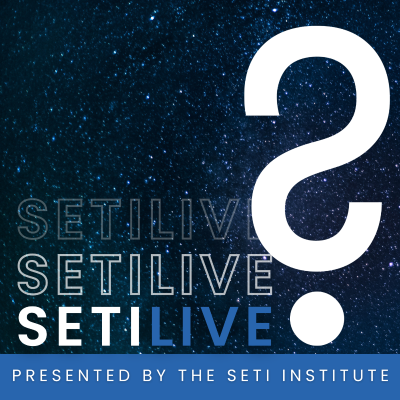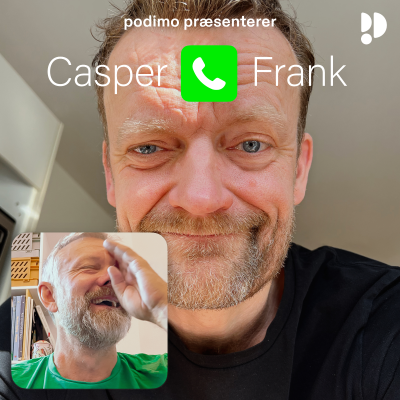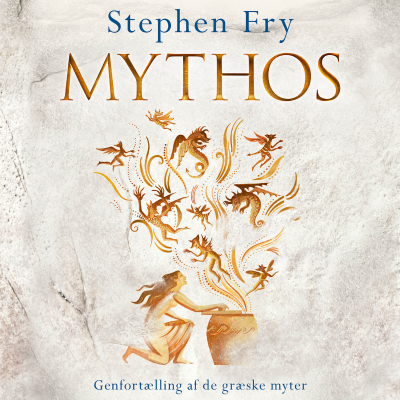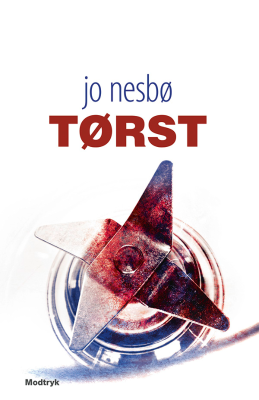
SETI Live
Podcast af SETI Institute
Begrænset tilbud
1 måned kun 9 kr.
Derefter 99 kr. / månedIngen binding.

Mere end 1 million lyttere
Du vil elske Podimo, og du er ikke alene
Bedømt til 4,7 stjerner i App Store
Læs mere SETI Live
SETI Live is a weekly production of the SETI Institute and is recorded live on stream with viewers on YouTube, Facebook, LinkedIn, X (formerly known as Twitter), and Twitch. Guests include astronomers, planetary scientists, cosmologists, and more, working on current scientific research. Founded in 1984, the SETI Institute is a non-profit, multi-disciplinary research and education organization whose mission is to lead humanity’s quest to understand the origins and prevalence of life and intelligence in the Universe and to share that knowledge with the world.
Alle episoder
109 episoderJoin planetary scientists Beth Johnson and Ian Pamerleau, lead author of a groundbreaking new Nature Astronomy study, for a deep dive into the icy mysteries of Ceres—the largest object in the asteroid belt and the only dwarf planet to be orbited by a spacecraft. While Ceres shows signs of an ice-rich interior, its heavily cratered surface doesn’t behave like soft, ice-laden terrain. So what gives? To solve the puzzle, Pamerleau and colleagues used simulations and an updated model of how impure ice deforms. Their work reveals that Ceres once hosted a subsurface ocean that froze from the top down, concentrating impurities as it solidified and creating a gradient from ice-rich surface layers to a rockier interior. (Recorded live 10 July 2025.)
How does life begin? This intriguing question touches on science, philosophy, and the imagination. Artist and INCUBATOR Art Lab Director Jennifer Willet created an artwork that visualizes the theories of SETI Institute Drake Award recipients Dr. David Deamer and Dr. John Baross. Willet’s work, Dreams of Biogenesis, imagines the birth of life on our planet as a reverie of molecules, cells, micro and multicellular organisms assembling and evolving under unique environmental conditions. Join SETI AIR Director Bettina Forget and Jennifer Willet for a conversation about creative research that combines fine arts practices with applied biotechnologies. INCUBATOR Art Lab: https://incubatorartlab.com/ [https://incubatorartlab.com/] (Recorded live 3 July 2025.)
Last week, the NSF–DOE Rubin Observatory released its First Look images, including stunning views of the Trifid and Lagoon nebulae, an astounding Cosmic Treasure Chest of stars and galaxies, and a "swarm" of newly discovered asteroids. Captured in a mere ten hours of observing time, this preview gave us a taste of what is to come for the groundbreaking observatory. As the press release states, "Rubin’s innovative 8.4-meter telescope has the largest digital camera ever built, which feeds a powerful data processing system. Later in 2025, Rubin will begin its primary mission, the Legacy Survey of Space and Time (LSST), in which it will ceaselessly scan the sky nightly for 10 years to precisely capture every visible change." Join SETI Institute communications specialist Beth Johnson and CEO of the LSST Discovery Alliance Beth Willman in a special SETI Live event, talking about these First Look images, the future of the LSST mission, and what all the new data could mean for astrobiology and planetary defense. Press release: https://rubinobservatory.org/news/first-imagery-rubin [https://rubinobservatory.org/news/first-imagery-rubin] (Recorded live 1 July 2025.)
A major new exhibition at the Natural History Museum in South Kensington, Space: Could Life Exist Beyond Earth?, runs from May 17, 2025, to January 4, 2026, and will feature a complete LaserSETI instrument on display. The exhibit explores one of humanity’s most profound questions: Are we alone in the universe? The exhibition brings together cutting-edge science, captivating artifacts, and the latest research in astrobiology, exoplanets, and the search for extraterrestrial intelligence. LaserSETI represents a new frontier in SETI, using a global network of instruments to continuously scan the night sky for brief laser pulses—potential signs of technology from beyond Earth. The first two sites were in California, at the Ferguson Observatory in Sonoma County, and on Haleakala in Maui, Hawaii. Last year, a third site went online in Sonora, Arizona; now, a new station is being installed in Puerto Rico. Join communications specialist Beth Johnson, Simon Steel (Deputy Director, Carl Sagan Center) and Outreach Manager for LaserSETI Lauren Sgro to talk about the London exhibition, the new observatories, and what this all means in the search for life beyond Earth. (Recorded live 26 June 2025.)
🌍 What Will Earth Look Like in 1000 Years? Will humanity collapse, thrive, or colonize the stars—and could alien civilizations detect us? Join senior planetary astronomer Dr. Franck Marchis for a fascinating conversation with Dr. Jacob Haqq-Misra, astrobiologist and lead author of a groundbreaking study exploring 10 possible futures for Earth’s technosphere—the global network of our technologies—and what these futures mean for the search for extraterrestrial intelligence (SETI). 🚀 From stable zero-growth societies to interstellar expansion, Dr. Haqq-Misra’s team models how Earth’s trajectory might look over the next millennium and what clues we might be sending into space. Could future Earth resemble a sci-fi utopia—or become invisible to alien observers? 👽 Learn how technosignatures like atmospheric pollution (yes, even nitrogen dioxide!) could help us find—or hide from—civilizations across the galaxy. 🔭 Whether you’re into space exploration, science fiction, or the future of humanity, this interview dives deep into the cosmic implications of our technological choices. (Recorded live 12 June 2025.)

Bedømt til 4,7 stjerner i App Store
Begrænset tilbud
1 måned kun 9 kr.
Derefter 99 kr. / månedIngen binding.
Eksklusive podcasts
Uden reklamer
Gratis podcasts
Lydbøger
20 timer / måned

































